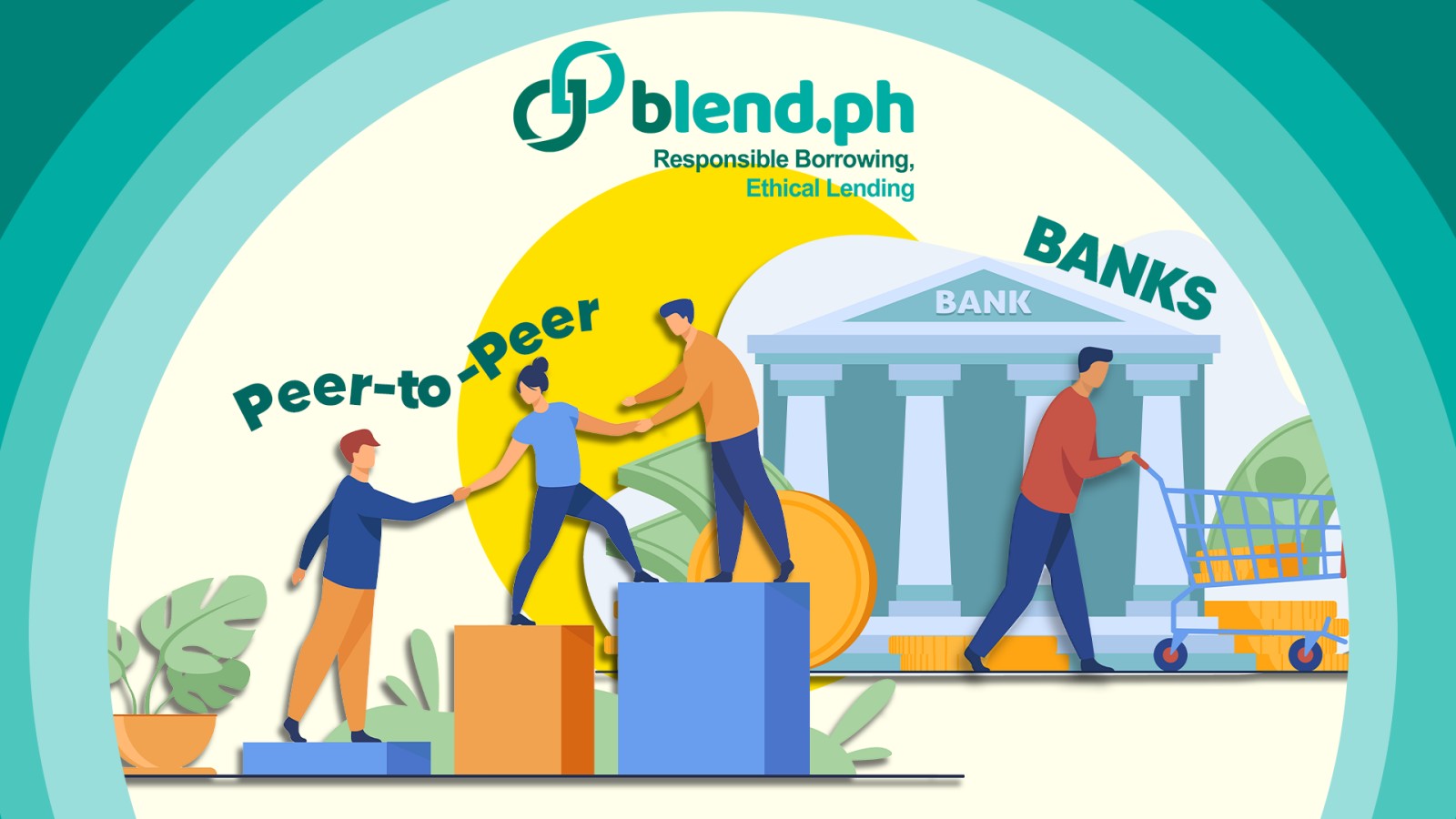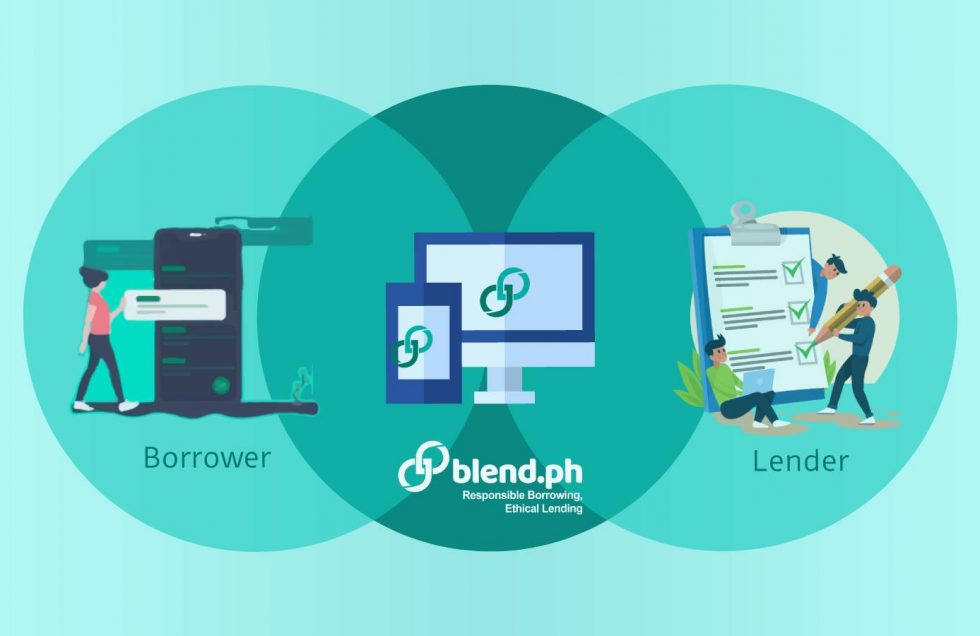Zeroing on the Benefits of P2P: Using Peer to Peer Lending Platform vs Bank

When it comes to getting qualified for a loan, and receiving loan proceeds, a peer-to-peer or P2P lending platform can be a boon. Consider this scenario: a small startup business owner needs a cash flow boost to get his venture off the ground, and applies for a loan from a bank, but bank sees a high-risk profile and the loan request is declined. Where can the person encountering difficulty in accessing traditional lending turn to for assistance? A reliable peer to peer lending platform, no less.
Peer-to-peer lending can bridge the credit gap by offering fast and low-cost financing to unserved market segments, including small business entities or individuals with limited financial records. Years ago, the first thing that may come to mind when the need for a loan comes to mind are family members and banks. Bank lending, back when P2P lending mechanisms were unheard of, was the usual source of financing for many entrepreneurs planning to grow their businesses.
Most banks have stringent loan requirements and often give preferential treatment to businesses with track record of generating profits over a length of time. Banks check if small and medium enterprise owners can demonstrate consistency in generating a steady income stream. For startup firms who are just about to begin operations, this is not happening yet, and so are oftentimes denied loans.
With the weakening of the banking sector — as far as being able to offer desired rates of return to depositors, as well as loan services to its customers are concerned — non-bank players like peer to peer lenders serving as substitutes vs complements to traditional financial institutions have gotten a large share of the market.


Credit When Most Needed
Fintech and peer to peer lending services have been expanding and reaching an increasing number of people in recent years. By broadening the range of instruments that small and medium entrepreneurs and cash-strapped salaried individuals may avail, peer to peer lenders enable these sectors to grow and contribute to the economy.
Indeed, peer to peer lending & investing has seen wide acceptance years before the pandemic happened, and most firms have been sustaining the momentum even this pandemic era.
- Peer to peer lenders offer lower rates than banks (owing to the fact that everything is done online, so overhead costs are lower)
- Loans are typically unsecured, and this is among the key reasons why small businesses lacking collateral or credit history are attracted to P2P lending.
- They are technology-backed. Credit assessment is analytics-enabled, meaning algorithms do much of the work in evaluating loan applicants, including those with limited financial/credit history. Worries over security concerns or data breach are eased because personal details and financial information are safeguarded, again by investment on state-of-the art technology.
- The best peer-to-peer lending platforms can guarantee transparency and protection to investors by ensuring that even startup firms or new borrowers have all the necessary requirements, are registered and able to submit them on the portal.
- Short turnaround time. The whole lending process takes place online; cutting-edge technology is utilized by most peer-to-peer lending That, and sustained relationships with funding partners, leads to faster approval process and overall shorter turnaround time.
- Peer to peer lenders can offer customized solutions to borrowers based on their profile, whereas banks usually work with standardized lending products. There are instances when salaried individuals may have existing savings and checking accounts with a bank, but may still not qualify for a loan.
Nonetheless, P2P platforms complement banks by providing small loans. Upon closer look, loan amounts and repayment terms of bank loans and peer-to-peer loans are similar in certain instances.
As far as investors are concerned, peer to peer business lending is now considered a good money-earning option or way to diversify one’s portfolio. In p2p banking and lending, investors can select from a wide range of creditworthy borrowers depending on their risk appetite and the terms may vary from 30 days to three years.
Shop around for the best peer to peer lending rates and check out just how streamlined the application process is by visiting www.blend.ph/.
Choose from the alternative loans options for Pag-IBIG Multi-Purpose Loan at BlendPH
Qualified members of Pag-IBIG Multi-Purpose Loan can process their loans through the Pag-IBIG...
Gas LPG partner M-GAS and BlendPH agree to offer more franchise loans to Filipinos
The leading and affordable gas LPG in the Philippines, M-GAS, partners with BlendPH to offer more...
When to buy the best new tech gadgets?
When deciding when it’s time for an upgrade, the first thing to know is to keep in mind that such...
Travel tips during COVID: Don’t run out of cash
SUMMARY: Because of quarantine restrictions, a lot of people are looking forward to traveling...
Esting’s Bellychon signs MOA with BlendPH for more affordable franchise loans
Esting’s Bellychon signed a memorandum of agreement or MOA with BlendPH to offer more affordable...
Right Choice Finance Partners with BlendPH to provide lower business loan rates in the Philippines
Right Choice Finance adds another trusted partner and affiliate Similar to what colors are to cars...






